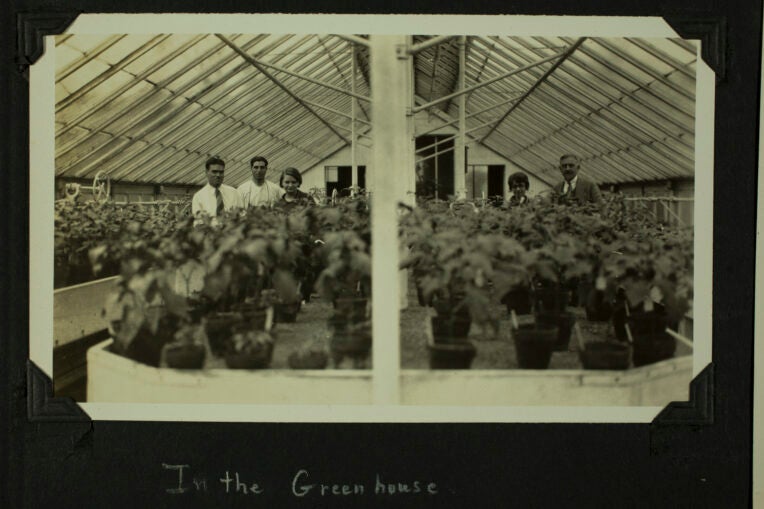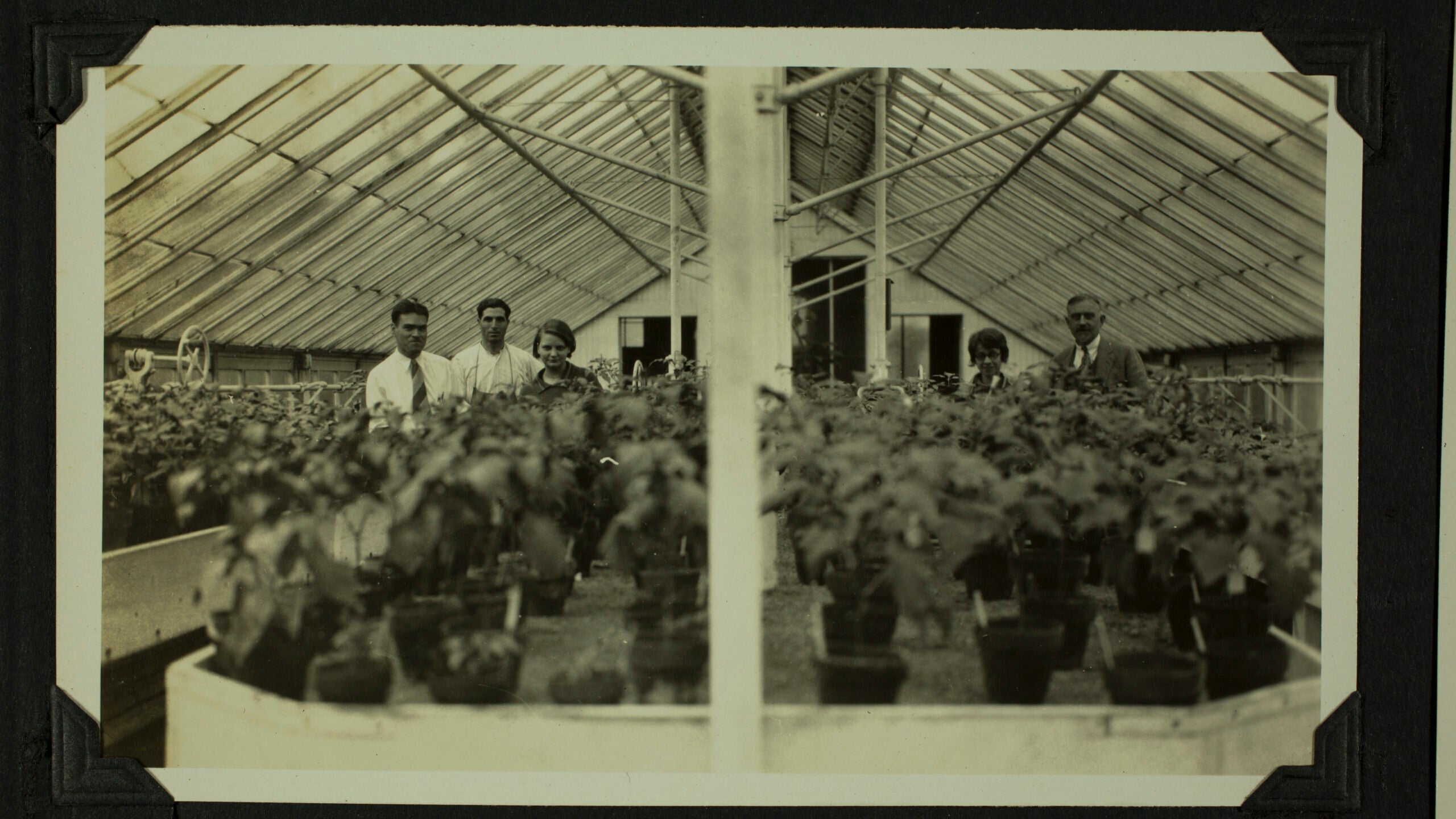With the generous support of the Gardiner Foundation, the CSHL Library and Archives has completed a significant history of science project, an exhibition entitled Plant Science, Biotechnology and Agriculture: a History of Science on Long Island, 1900-2020. The exhibition can be seen here.
The exhibition explores the relationship between agriculture and basic scientific research and how this relationship developed on Long Island over the course of the twentieth century and into the twenty-first.
The mission of the Gardiner Foundation is to support the study of Long Island history and its connections to the national story of the United States. Our exhibition does this by way of the history of science. We tell a series of stories about geneticists and plant researchers and farmers on Long Island. These stories connect the history of Long Island to the wider world and illuminate the often neglected links between the history of agriculture and the history of science.

The exhibition is based on a wealth of archival material drawn from our own collections and from those at other institutions, including Brookhaven National Laboratory, the Long Island Horticultural Research and Extension Center and the Small Special Collections Library at the University of Virginia. (Virginia, you might ask? Sometimes, due to the vagaries of scientific careers and scientists’ choices about where they want their papers kept, archival material wanders very far afield from its place of origin.)
A physical version of the exhibition is open to visitors at the Carnegie Library at CSHL. CSHL faculty, staff and students can enter the library with their ID; visitors from outside the laboratory must make an appointment.

